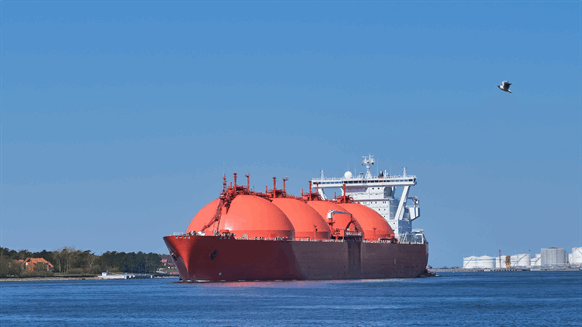AG&P International Pte. Ltd. said the Philippines’ first cargo of liquefied natural gas (LNG) arrived Wednesday in the country, which is engaged in importation amid the depletion of domestic natural gas production.
“Singapore LNG firm AG&P will soon start operations at the Philippines’ first import terminal following the completion of a ship-to-ship LNG transfer between Golar and Ish Glacier in the Bay of Subic,” AG&P said on social media.
Ish is a floating storage unit with a capacity of 4.86 million cubic feet (137,512 cubic meters) that AG&P had converted from an LNG carrier from ADNOC Logistics and Services (ADNOC L&S) under a 15-year deal signed with the Emirati company last year. ADNOC L&S will supply LNG as well as operate and maintain the vessel, chartered for 11 years with a four-year extension option, AG&P said in announcing the deal on February 23, 2022.
On Thursday, the first shipment of LNG arrived at AG&P’s terminal in Batangas Bay, he said on Facebook, calling the development “historic.” The terminal, about 80.78 miles (130 kilometers) drive from Manila, is the Southeast Asian nation’s first LNG import facility.
The Philippines’ Department of Energy has so far approved seven LNG terminals, amid declining local gas production and a growing global push for a cleaner fuel.
Production from the Malampaya gas field, the sole asset of only two commercial natural gas discoveries in the archipelago, has fallen steadily since 2019, from 155.49 billion standard cubic feet (Bscf) that year to 113.61 Bscf in 2022, according to a February 15 Department update.
Shell late last year completed the sale of its entire 45% operating stake in the field to local firm Prime Infrastructure Capital Inc.
Natural gas has been the third largest source of energy in the Philippines. It contributed 18,675 gigawatt hours (GWh) to the national grid in 2021, behind coal at 62,052 GWh and renewables at 23,771 GWh, but ahead of oil at 1,616 GWh, according to the latest available data from the Department of Energy.
Although supply has been reduced, the department has forecast an annual growth rate of peak energy demand of seven percent between 2020 and 2040. To meet demand, the country’s more than 113 million inhabitants must increase the installed capacity by more than five times from 22,317. megawatts in 2019 to 114,601 MW in 2040, according to the agency’s “Energy Development Plan 2020-2040.”
The inaugural LNG delivery will power San Miguel Global Power’s 1,200-megawatt power plant in Batangas province, according to AG&P’s announcement.
To contact the author, please email jov.onsat@rigzone.com


